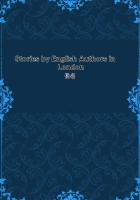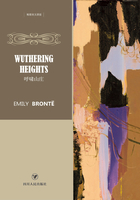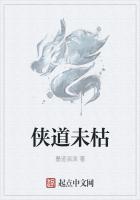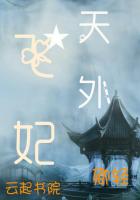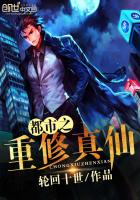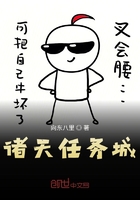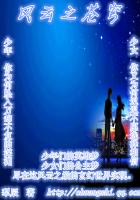Qing Dynasty is the final chapter in the history of ancient Chinese painting. During the period, all kinds of paintings mixed and huge changes took place. Literati painting continued its development pace and became a trend. Pseudo-classic green coloring landscape painting, containing elegant artistic condition, seemed a fairyland. They were used to show ideals and pursuits of literati. Imperial-court decorative painting reached a peak season during the period, absorbing techniques of Western painting. Since working as a court painter, Giuseppe Castiglione, an Italian, learned skills of traditional Chinese painting and influenced other Chinese painters including Qing emperors. The Eastern and Western painting arts mixed in the palace of the Qing Dynasty. As a result, a number of artistic works with both Oriental and Western styles were created. Meanwhile, imperial-court paintings in the Qing Dynasty presented a different look from previous dynasties. Landscapists continued their pace of restoring old traditions in the early Qing period, while the technique of freehand wash painting became popular in the late Qing period. Except new art schools and styles, famous painters and masters also appeared, such as “Four Great Wang-surnamed Painters(Wang Jian, Wang Min, Wang Hui and Wang Yuanqi),”“Six Great Painters in the Early Qing Dynasty(Wang Jian, Wang Min, Wang Hui, Wang Yuanqi, Wu Li and Yun Shouping),”“Four Junior Wang-surnamed Painters(Wang Yu, Wang Su, Wang Chen, Wang Jiu), ”“Four Later Wang-surnamed Painters(Wang Sanxi, Wang Tingzhou, Wang Tingyuan and Wang Mingshao), ”“Changzhou school of painting(also known as “Yun school of painting” or “Piling school of painting”),”“Jiang style flower-and-bird painting,”“Four Monk Painters(Shi Tao, Zhu Da, Shi Xi and Jian Jiang)” and “Eight Eccentrics of Yangzhou(Jin Nong, Huang Shen, Wang Shishen, Li Shan, Zheng Xie, Li Fangying, Gao Xiang and Luo Pin)。” Qing emperors liked to collect ancient calligraphy and paintings, developed imperial-court painting and actively drew paintings themselves. It therefore gave a great boost to the development of painting art in the Qing Dynasty. Imperial-court paintings during the period usually had huge size, imposing composition, fine and delicate brushwork and prose inscriptions of Qing emperors. They are indeed rare artistic works. Qing artists stressed research on paintings of previous ages and analysis of their merits and demerits. In addition, systematic theories were formed and many great artistic works were created. It is a notable characteristic of the period. The number of Qing paintings is huge, but only a few mid-Qing Dynasty famous works are selected here. Many of the selections were previously kept in the palace of the Qing Dynasty, but later moved overseas and were collected by major museums all over the world.
同类推荐
英文爱藏之·打开生命的窗
人生于世,不过是匆匆过客。急急流年,滔滔逝水。生命中没有什么恒久不变的风景。我们的理智使我们一次次看透人生,我们的激情又使我们一次次重受蒙蔽。生命原本就是一场得失共存的行走,既然来走了这一遭,那就千山万水,随意行去。透过这一篇篇的哲理故事,打开通向灵魂的窗户,在一花一木中抵达生命的豁然之境。作为双语读物,《打开生命的窗》为中英双语对照版,既是英语学习爱好者、文学爱好者的必备读物,也是忙碌现代人的一片憩息心灵的家园,让读者在欣赏原法原味和凝练生动的英文时,还能多角度、深层次地品读语言特色与艺术之美,再配合文章后附加的多功能、全方位巩固题型,更有助于理解并学习英文。课外英语-电脑双语地带(双语版)
本套书共50册,分为美国各州的小知识,七彩缤纷的音符,优美好看的小散文,开心时分的短文,经典流传的寓言,超级高效的短句,实际有用的词汇等等在这些书中,备有单词解释,相关简介,或中文翻译,便于同学们更好的阅读和理解,真正进入文字的内涵当中,准确地和文字进行交流。本书主要分为电脑发展篇,网络片,多媒体片等。Stories by English Authors in London
Frequently I have to ask myself in the street for the name of the man I bowed to just now, and then, before I can answer, the wind of the first corner blows him from my memory.呼啸山庄(英文原版)
《呼啸山庄(鲸歌英文原版)》是英国女作家勃朗特姐妹之一艾米莉·勃朗特的作品,是19世纪英国文学的代表作之一。小说描写吉卜赛弃儿希斯克利夫被山庄老主人收养后,因受辱和恋爱不遂,外出致富。回来后对与其女友凯瑟琳结婚的地主林顿及其子女进行报复的故事。全篇充满强烈的反压迫、争幸福的斗争精神,又始终笼罩着离奇、紧张的浪漫气氛。此作品多次被改编成电影作品。英语情景应用语法教程
本教程涵盖了动词的时态、语态、句法、非谓语动词和虚拟语气等方面的内容。本教程有别于一般的语法书,首先是在每个单元的开头设置了导入语,用生动形象的语言激发学生的学习兴趣,使学生对将要学习的内容有一定的了解;其次是在每个单元的最后设置了学习反馈表,以便学生对本单元的学习效果做出评价。本教程最大的特点是每个单元都提供一些音频和视屏学习资料,让学生在实际场景中学习枯燥的语法知识,同时还根据音频和视频学习资料设计了相应的学生活动,以做到学以致用。
热门推荐



